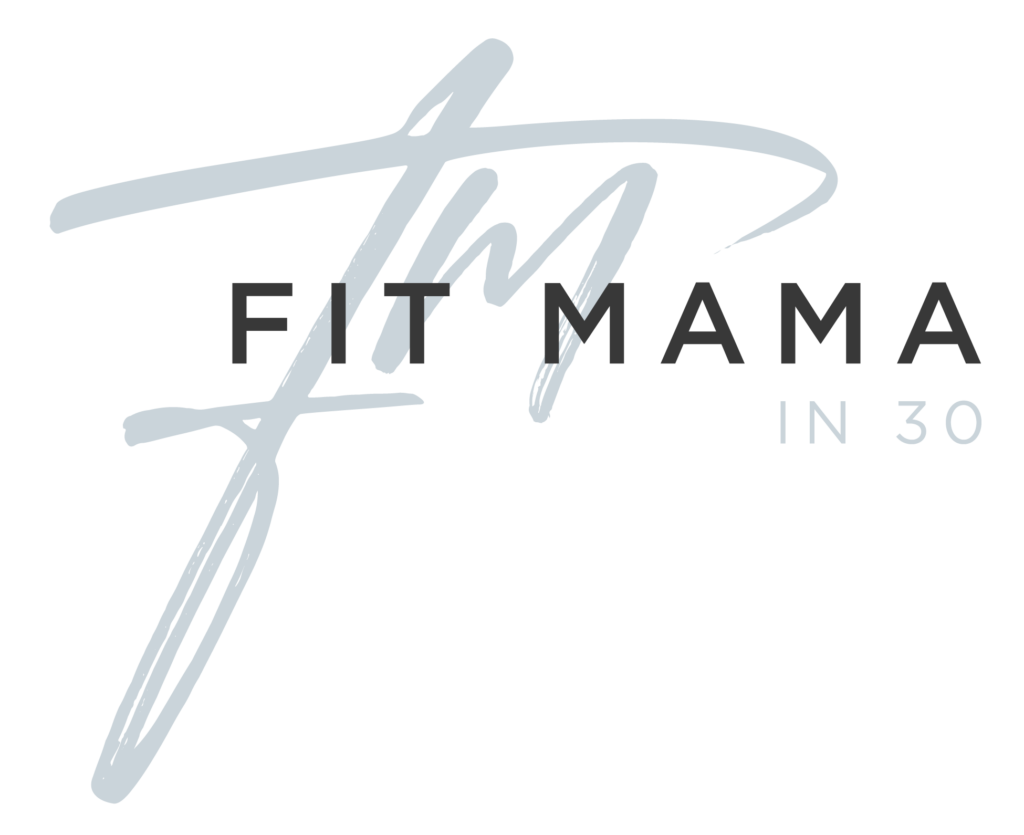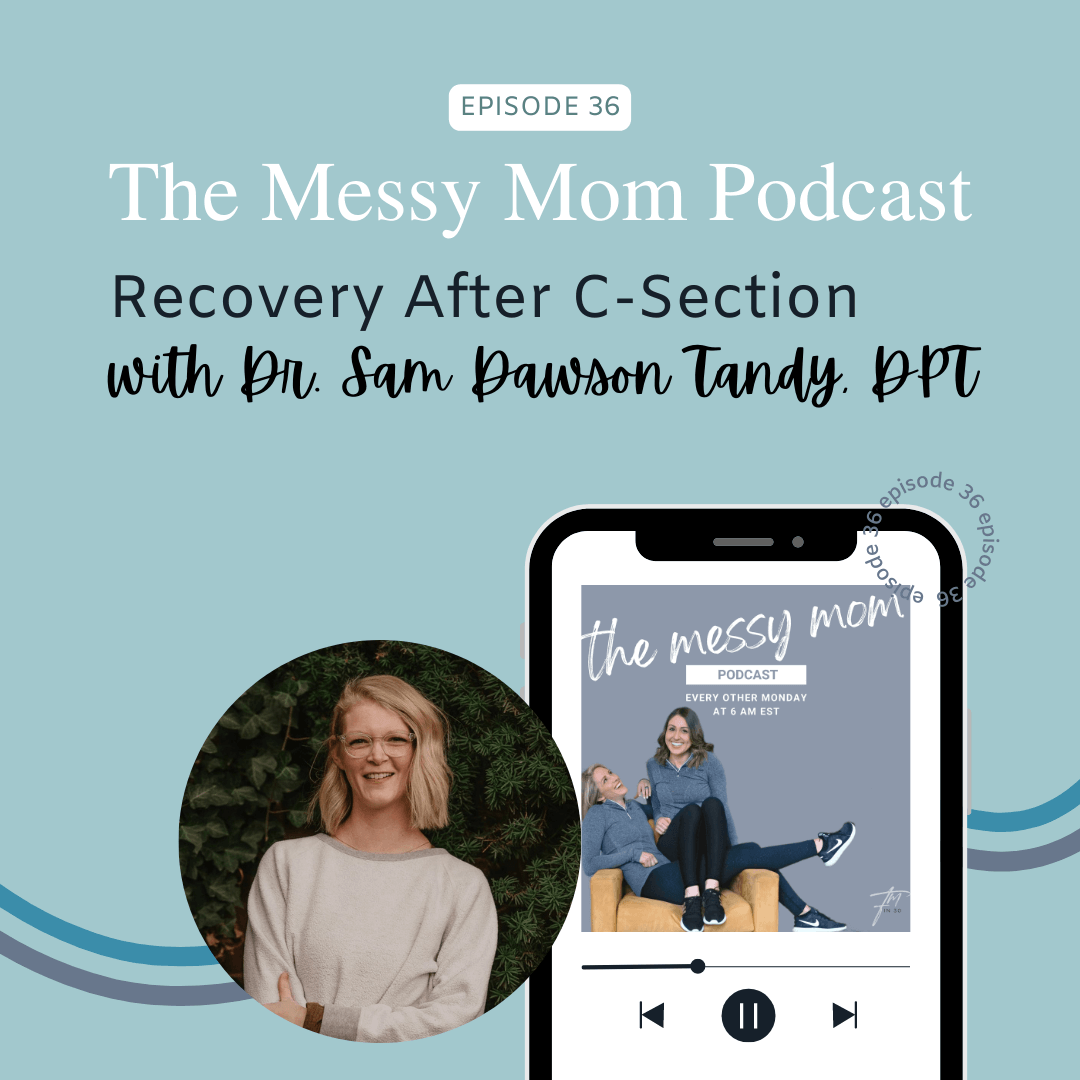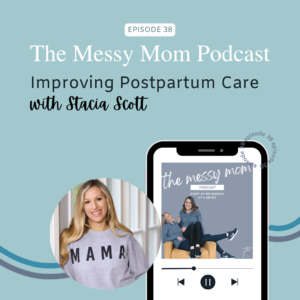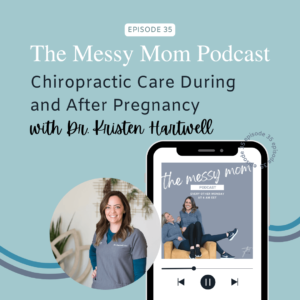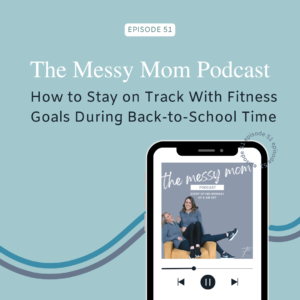CLICK PLAY TO LISTEN TO RECOVERY AFTER C-SECTION WITH DR. SAM DAWSON TANDY, DPT:
Recovery After C-Section with Dr. Sam Dawson, DPT
Dr. Sam Dawson Tandy, DPT is a pelvic floor and pelvic health specialist from Indiana. She attended college at Purdue (where she met Bailey: Boiler Up!) This is where last minute she decided she wanted to go to PT school. At the same time, she was ready to try something new and leave Indiana and she ended up in the beautiful state of Utah, at the University of Utah.
She still currently resides in Salt Lake with her childhood sweetheart and their one-year-old baby. Where she loves spending time outside doing activities like skiing, hiking, or biking.
In this episode, we and Dr. Tandy chat about the questions surrounding recovery after a c-section such as the core recovery process, what the time of recovery looks like, when it’s safe to start running, scar mobilization, and more.
Initial Stages of Recovery
We dive right into it with Bailey asking about what the core recovery process after a c-section is, specifically the protocol for movement after a c-section. For example, if someone were to have a c-section and get home with their baby. What are the limitations or what are some things that they should be mindful of?
Dr. Tandy starts by pointing out how wild this is because c-sections are major surgery. And for any other surgery where they open your abdomen, you would have a physical therapist visit your recovery room. She even experienced this when in school doing her rotations. However, when it comes to cesarean births it’s not common to receive any physical therapy or any advice on how to move for example. So, this leads people to be in the dark because there just aren’t protocols to begin with. The only one that Dr. Tandy was aware of is no lifting and careful twisting.
And when it comes to early postpartum recovery after a c-section, there should be a lot more things that we need to be aware of. There were just nine layers of tissue cut through on the body so it’s an acute phase of healing as Dr. Tandy points out. On top of that, something that can be difficult for instance is getting out of bed, and the techniques that can be used like the ‘log roll’ can help with comfortability.
Some other things to consider…
- How much rest you need. This is going to be different from a vaginal birth since you’ve had all those layers of tissue that need to heal. Including any extra weight and pressure on the core.
- Some may hold trauma from having a c-section. The emotional toll it can have after you had surgery to deliver your baby.
- Some women don’t have extra support around them.
So, give your body time to heal and be gentle with yourself!
A Few Weeks After C-Section Recovery
That’s the initial stage of healing, Cari follows up with a question focused on after the next few weeks, “what is the protocol for when you can start diastasis and pelvic floorwork versus a vaginal birth?”
And Dr. Tandy points out that the protocol is really similar for a c-section. There are some considerations for the surgical site but everyone can start with the same foundation with breathing.
As Dr. Tandy says, “A lot of the focus postpartum is just to get your muscles back online because you oftentimes can’t feel what’s happening. If you don’t build that foundation, then when you go into doing more activity, they may not be working or coordinated properly. So, probably the biggest difference I would say is understanding what’s normal and abnormal discomfort where the incision is. For example, if you’re doing really deep 360 breathing and it’s pulling on your incision causing pain, then that’s something you might want to kind of ease off on, just skip for that day or be more gentle with.”
And she further continues, “as far as when to start, you really could start right away as long as it feels good to you. Nothing should ever feel bad, especially in this really vulnerable time with your body. So some of the stuff that you guys have at Fit Mama in 30 is where you start with gentle breathing and that foundation where you’re practicing tuning into parts of your body and activating it. It’s just that with a c-section, sometimes it can be harder because you have that physical incision in the scar tissue that’s starting to build.”
Recovery Time after a C-Section
The next question is around what the recovery time after a c-section is. Bailey asks her if she always hears that you should wait 6 weeks to start an activity such as an exercise regimen. She mentions that it can be later for some people, depending on their specific situation but does Dr. Tandy typically feel like it is longer when it comes to people who have had c-sections?
And she replies that it again does depend on the person but not really. Everyone’s experience is so different. But in her physical therapy practice which specialized in perinatal care, they try to push that you don’t have to wait the 6 weeks. She explains, “I like to educate people what it is because it’s not this get out of jail free and mean you’re magically good now. They’re really just looking at that it takes six weeks for the tissue that they’re looking at to heal. So, muscle tissue, it’s an optimal time to see whether it’s healing. For a c-section, obviously, they don’t go in and look at the muscle and I’m sure they don’t even like having someone activate the muscle. But they’re looking at the way the tissue is healing and that’s the biggest thing. I feel like even now they’re like stepping back off of that and they’re just asking subjectively, ‘are you having problems? Do you even want a vaginal exam?’ For a c-section, they’re looking at the incision, hopefully. But I think it just depends on every person’s experience.”
She carries on with, “and I definitely don’t think you need to wait six weeks to do some of this foundational, gentle stuff. One thing we tell people is the early protocol or exercises, like breathing, practicing activating with your breath, and the coordination stuff. You can do that while you’re feeding your baby or while you’re hanging out watching Netflix. And it’s really rare that that would cause any problems with anyone, it’s just that you would want to be careful if it was causing red flags. So, really sharp pain, dizziness, or nausea. I don’t believe anyone has to wait six weeks, but that doesn’t mean everyone mentally needs to. So, I think that’s another aspect that you have to weigh into the equation.”
Which gave Cari a chance to ask an additional question. She was curious if Dr. Tandy ever had patient(s) that come to you, is their recovery different from someone who’s been working through core breathing their entire pregnancy than someone who hasn’t?
And Dr. Tandy said, “100%. And it’s because whatever type of birth, the biggest hurdle is you have to find your muscles again, and if you are already good at finding them it’s going to be easier afterward.”
Not only that but she explains if the foundation’s not built, that’s when injury and symptoms can occur such as urinary leakage. So, if you practice these things, some may have an easier time recovering because they know their body better.
Running after a C-Section
Recovery time bridged right into the next question from Cari which came in from a listener. She wants to get back to running and if she’s had a c-section, when does Dr. Tandy recommend running, how or when can they begin?
And she reminded us again that, it really depends. But after a c-section, you do need to give yourself some grace and respect for the actual surgery that occurred.
She followed up with, “When you think about the action of running, it is a huge mechanical task. There’s a lot going on. There’s a lot of stability that’s happening, pelvic floor and core stuff. Understanding that you have to heal from the surgery first or else you could wind up in a bad situation. That’s going back to that healing time of tissues. Between six to eight weeks, I wouldn’t do anything really rigorous because they literally need to heal and there’s nothing you can do to really speed up your blood from going there and creating the scar tissue. Then if you’re past that phase then I would personally recommend always starting with the foundational things like all of the core recovery things.”
She makes the point that, if you’re feeling well, not having a lot of symptoms and you’ve done some of the foundational things to recover your core and pelvic floor, you could try it. But there are still protocols she gives people for running. For example, a 4 to 1 walk-to-run ratio, which includes walking for 4 minutes, running for 1 minute, and repeat. It’s a gentle way to get back to it.
Dr. Tandy also mentions some things to watch out for when it comes to a cesarean birth and running. The first is the scar tissue pain, which is a big one. When it comes to running, your body, your torso, and your pelvis rotate a lot which can cause a pull on the scar tissue. Another thing is any leakage or heaviness in your vagina.
So, just don’t jump into it too soon. If you do find yourselves having any of these issues discussed, then look at going to a professional like Dr. Tandy. Remember, your body’s not just post-birth, it’s also post nine months of pregnancy and you have to take into account how much change your body underwent. Everyone has a different journey to getting back to what they want to do.
Scar Mobilization
Dr. Tandy brought up that the c-section incision scarring can pull and be uncomfortable. Which led Bailey to her next question, when can you start scar mobilization?
And she said, “that would be something you would want to wait until you’re medically cleared to do because the risk would be that you would open the incision. So, if you did it too soon that could happen. Whenever you go back to your doctor, I would bring it up and ask if it would be safe to do this. And along that same path, you’re still waiting on the tissue to heal. So you wouldn’t want to massage it while it’s still trying to conjoin together. Which that’s usually between 6 to 8 weeks I think is when people go back to their doctor.”
She continues that there there are some things that she feels can be helpful even before then. Such as mental and emotional things like looking at your scar. “Take a second when you’re ready to just look at it and place your hands on it. Wash it. I’ve heard from personal stories that that’s really hard to do, but I think it’s a really important step even though it’s hard. Even if you do it for five seconds for the first time, I think that those are constructive, beneficial things to do before you even start a scar massage.”
But she also mentions the mechanical benefits of scar tissue massage. “It encourages the scar tissue not to adhere. It can adhere deep and that can cause pain. It can cause bladder symptoms like urgency and frequency. It can cause bladder pain because your bladder lives right behind where the c-section scar grows. It can exacerbate a diastasis or a prolapse because of the pressure it puts on it. So, after you’re cleared, you don’t have to use any specific mechanism. You can just place your hands on either side of the scar and just do a little DJ. Just doing it for a few minutes a day will help encourage the scar tissue to line up better and move better.”
Bailey had one last follow-up question on scar mobilization. Does it matter how postpartum you are? And Is that always going to be beneficial? For example, if you’re 10 years postpartum, you’ve never done it, but your scar still bothers you, could scar mobilization be helpful?
And Dr. Tandy said, yes, 100%. Though, she would say “if you don’t have any symptoms, you can do anything you want and you don’t think there’s any correlation, then no.” And “it’s not really that you’re going in and taking out the scar tissue. It’s just that you’re teaching the tissue around it to move better because if it’s not moving, it causes problems.”
So remember mamas, It’s never too late. It doesn’t matter how postpartum you are!
This is only the beginning of our conversation with Dr. Sam Dawson Tandy, DPT on recovery after c-section. Listen to the full episode wherever you get your podcasts.
Resources mentioned:
- If you want to learn more from Dr. Sam Dawson Tandy you can find her on Instagram @birth.embodied. She also works at Engage Physical Therapy and Wellness clinic and that has more of her physical therapy practice like exercises and tips, @engageptutah.
- Find us over on Instagram @fitmamain30
- Try any of our Fit Mama in 30 programs completely free for seven days. And if you decide you want stick with us after the seven days, you can get $10 off your membership with the code PODCAST at checkout.
